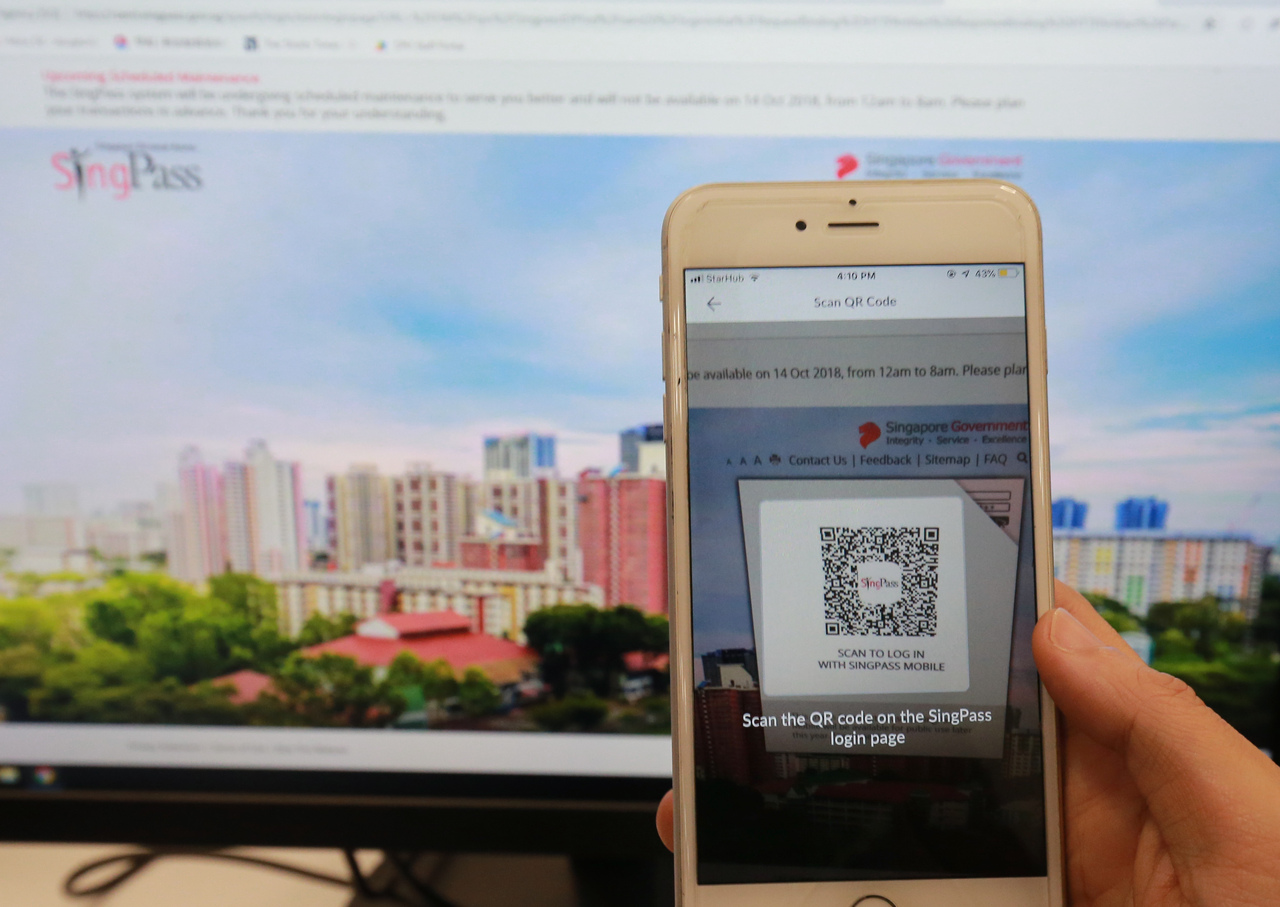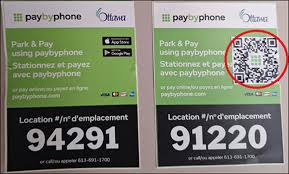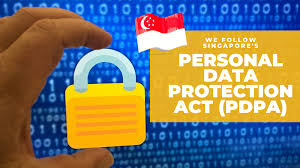This is a concerning case of employee fraud in Singapore. Here’s a summary of what happened:
- Amira Nur Hudah Mohamed, a 28-year-old clinic assistant, has been sentenced to 14 months in jail after pleading guilty to cheating 509 patients out of over $55,000.
- She employed multiple deceptive tactics to redirect patient payments to her personal accounts:
- Changed her PayNow name to match the doctor’s name
- Provided her own PayNow number to patients
- Replaced the clinic’s payment QR code with her own during her shifts
- The fraud was discovered when a patient sent a payment screenshot to the doctor, who noticed the unusual account details and reviewed the CCTV footage.
- Amira has repaid only $3,000 of the stolen funds, having gambled away the money on an unlicensed gambling website.
The prosecutor emphasized the premeditated nature of the crime and noted how such actions undermine public confidence in digital payment systems. The maximum penalty for cheating in Singapore is up to 10 years of imprisonment and a fine.
This case highlights the importance of proper oversight and security measures for digital payment systems in healthcare and other settings where financial transactions occur.
QR Code Payment Fraud: In-Depth Analysis
The Clinic Assistant Case Study
This case demonstrates several sophisticated elements of QR code fraud:
Key Tactics Used
- Identity spoofing: Changing her PayNow name to match the doctor’s, creating a false sense of legitimacy
- Progressive escalation: Starting with direct PayNow number sharing before advancing to QR code swapping
- Timing manipulation: Replacing QR codes only during her shifts to avoid detection
- Exploitation of trust: Leveraging her position as a clinic employee to facilitate the fraud
Psychological Elements
The success of this fraud relied on several psychological factors:
- Patients trust medical establishments and their staff
- People rarely verify payment details beyond the displayed name
- In busy clinic settings, patients are focused on their health concerns, not scrutinizing payment methods
- The familiarity of seeing the same staff member handling payments creates a false sense of security
Other Variations of QR Code Scams
1. Physical QR Code Replacement
- Public terminal swapping: Criminals place fraudulent QR codes over legitimate ones at parking meters, vending machines, or gas stations
- Restaurant menu scams: Replacing QR codes on menus with ones that link to fake payment sites
- Street vendor overlay: Placing fraudulent QR codes over legitimate vendors’ payment codes

2. Digital QR Code Manipulation
- Phishing emails with QR codes: Sending emails with QR codes that lead to credential-harvesting sites
- Malicious QR generators: Creating QR codes that execute malware when scanned
- Dynamic QR hijacking: Compromising legitimate QR systems to redirect payments
3. Social Engineering Approaches
- Fake customer service: Scammers posing as support staff and providing fraudulent payment QR codes
- Rental deposit scams: Fake landlords providing QR codes for security deposits
- Event ticket fraud: Selling tickets with payment QR codes that direct to scammers’ accounts
Anti-Scam Protection Measures
For Businesses
- Physical Security:
- Use tamper-evident QR code displays
- Implement regular verification checks of payment QR codes
- Install security cameras focused on payment areas
- Consider embedding QR codes in materials that are difficult to replace
- System Controls:
- Implement transaction alerts for unusual patterns
- Use confirmation screens showing recipient details before payment completion
- Require dual authorization for changing payment systems
- Consider digital signatures for QR codes
- Staff Protocols:
- Regular auditing of payment systems
- Clear separation of duties for payment handling
- Background checks for employees with financial access
- Regular training on fraud prevention

For Consumers
- Verification Habits:
- Always check the payment recipient’s name before confirming
- Look for confirmation details beyond just the displayed name
- Be suspicious if payment methods suddenly change
- Consider using banking apps that show recipient details before confirming payment
- Technical Precautions:
- Use QR scanner apps with security features that preview URLs
- Enable transaction notifications for immediate alerts
- Set transaction limits on payment apps
- Consider using credit cards with fraud protection for larger payments
- Situational Awareness:
- Be wary of damaged, covered, or seemingly replaced QR codes
- Question when payment methods differ from previous visits
- Take a moment to verify payment destinations despite time pressure
- If something seems unusual, pay via alternative methods
Reporting and Recovery
- Report suspected fraud immediately to the business and authorities
- Document all transaction details and communications
- Contact your bank or payment provider to flag fraudulent transactions
- In Singapore specifically, report scams to the Anti-Scam Centre at 1800-722-6688 or online at www.police.gov.sg/iwitness
The case highlights how even seemingly secure payment systems can be vulnerable when proper oversight measures aren’t in place. Implementing layered security approaches—combining physical security, system controls, and human vigilance—provides the most vigorous defense against these increasingly sophisticated QR code scams.
Modern technology is nothing short of a marvel in today’s world. It streamlines our daily tasks, making everything from shopping to information gathering incredibly simple. However, this convenience often comes at a cost that many users overlook.
One of the most popular tools in this digital age is the QR code. Businesses have embraced this technology, allowing customers to scan codes with their smartphones to access websites, promotions, or vital information with ease. Yet, lurking behind this convenience is a darker side—cybercriminals have also found ways to exploit QR codes for their gain.

You may be familiar with how QR codes work. By pointing your smartphone camera at a code, you can instantly access various online resources without the hassle of typing URLs. But here’s the catch: while you gain contactless access to information, the entity behind the QR code might gain more than you bargained for, potentially accessing sensitive data on your device.
This isn’t usually a concern when dealing with reputable businesses. However, the FBI has recently issued a warning about a troubling trend known as “squishing.” This term refers to fraudulent activities that utilise QR codes to deceive individuals into providing personal information or even transferring money.
As technology continues to evolve, it’s crucial to remain vigilant. The convenience of QR codes should never overshadow the importance of protecting your data from those who would misuse it. Always double-check the source of a QR code before scanning, and remember that not all technological advancements are what they seem.
In recent months, QR code scams have become a troubling trend, as highlighted by reports from CyberNews. In Atlanta, unsuspecting motorists found fake parking tickets affixed to their windshields. These tickets featured QR codes that promised a quick way to pay fines online or via phone. However, the reality was grim: scanning the codes funnelled money directly into the pockets of cybercriminals rather than any legitimate authority.

Meanwhile, in Texas, a similar scheme unfolded. Scammers placed counterfeit QR codes following to parking meters, enticing drivers to scan them for payment. Again, the result was the same—hard-earned cash was redirected to fraudsters instead of city coffers.
The FBI has warned that while businesses and individuals often use QR codes for seamless transactions, this convenience also opens the door for malicious actors. A cybercriminal can easily swap a legitimate QR code with a fraudulent one, leading unsuspecting customers to unknowingly send their payments into the wrong hands.

However, the dangers of these scams extend beyond financial loss. Some QR codes are designed to harvest personal information, like names and addresses, or even sensitive bank account details. The implications of such data theft can lead to identity theft and further financial woes, compounding the initial deception. As technology evolves, so too do the tactics of those who seek to exploit it, making vigilance more crucial than ever.
Jeff Taylor, the head of commercial fraud forensics at Regions Bank, shared a crucial reminder that resonates deeply with anyone handling money or sensitive information. “Just like with any other fraudulent activity, it’s essential for our clients to exercise caution and remain alert in safeguarding their finances and personal data,” he advised. His words carry a heavy weight of experience, as he knows all too well that the moment one lets their defences down could be the exact moment they or their business fall prey to deceitful schemes.

In today’s digital age, the prevalence of QR codes has introduced new avenues for scammers to exploit unsuspecting individuals. To navigate this treacherous landscape and avoid QR code-related scams, the FBI has provided a set of valuable guidelines.
First and foremost, once you’ve scanned a QR code, take a moment to scrutinise the URL that appears. Ensure it leads you to the correct website and appears genuine; often, malicious sites mimic legitimate ones, cleverly disguising themselves with slight variations—perhaps a misspelt word or an extra character that can easily go unnoticed.
Moreover, it’s vital to remain cautious when inputting any login credentials or financial details on a site accessed through a QR code. The allure of convenience should never overshadow the importance of vigilance; every interaction on these platforms requires a discerning eye.
As we delve into this digital realm filled with both opportunities and risks, let us heed these warnings and embrace a mindset of awareness. By doing so, we can protect ourselves and our businesses from the lurking threats that come disguised in seemingly innocent forms.

In a world increasingly reliant on technology, one might find oneself standing before a physical QR code on a flyer or a product label. It’s essential to approach this seemingly innocuous square with caution. Before you scan it with your device, take a moment to examine the code closely. Has it been altered in any way? Perhaps someone has placed a sticker over it, obscuring the original design. Such tampering could lead you down a treacherous path.
Now, imagine you’re curious about an intriguing offer and consider downloading an app via a QR code. Stop right there! It’s wise to resist that temptation. Instead, head over to your phone’s app store, where you can safely find the application you need without the lurking dangers of malware hiding in the shadows of a hastily scanned code.
Consider this: you’ve just purchased something online, and soon after, an email arrives claiming that your payment has failed. The message suggests that the only way to rectify this is through a QR code provided within the email. Before you act on such a request, pause and think. It’s better to be safe than sorry. Grab your phone and dial the company directly to confirm the legitimacy of the email. But remember, don’t rely on any contact information found within that email; instead, seek out the company’s official number from a reputable source.

Then, there’s the matter of QR code scanner apps. You might think it’s a good idea to download one to enhance your scanning capabilities, but tread carefully! This could open up your device to unwanted malware, putting your personal information at risk. Most smartphones come equipped with a built-in scanner in their camera app—use that instead and keep your device safer.
Picture a scenario where you receive a QR code from someone you believe to be a friend or acquaintance. The instinct might be to scan it immediately, but hold on! Rather than acting impulsively, take the time to reach out to them through a reliable number or email address that you already possess. Confirm with them whether they indeed sent you that code, ensuring that no mischievous trickster is playing games behind the scenes.
Lastly, if you find yourself faced with the prospect of making a payment after navigating to a website via a QR code, exercise caution; instead of proceeding with what might seem like an easy route, type in a trusted URL manually. This small extra step can protect you from potential pitfalls lurking behind the convenience of quick scans.

Vigilance is paramount in this digital age. By taking these precautions, you can navigate the world of QR codes with confidence and safety, ensuring that each scan leads you to genuine opportunities rather than unforeseen risks.
Singapore’s Anti-Scam Tactics
Singapore-Specific Recommendations
- Implement Singapore’s SMS Sender ID Registry to reduce SMS phishing attacks.
- Adopt National Digital Identity solutions like SingPass Face Verification
- Participate in sector-specific threat sharing groups coordinated by CSA
- Implement the Cybersecurity Toolkit for SMEs developed by IMDA and CSA
- Regular employee training on Singapore-specific scam tactics
- Monitor government alerts from SingCERT and ScamShield
- Deploy AI-based threat detection systems calibrated to local threat patterns
- Conduct regular security assessments aligned with MAS/IMDA guidelines
- Engage with Singapore Security Operations Centres (SOCs) for continuous monitoring
- Develop incident response plans compliant with local regulatory requirements

- Keep devices updated: Regularly update your computer and mobile devices to patch security vulnerabilities.
- Use security software: Install antivirus and anti-malware protection on your computers and schedule regular scans.
- Practice good password habits: Create strong, unique passwords for each account, enable multi-factor authentication, and avoid sharing passwords.
- Secure your home network: Set strong Wi-Fi passwords, use proper encryption (at least WPA2), update router software, and consider hiding your network.
- Defend against phishing/vishing: Be vigilant about suspicious emails or calls requesting personal information, and verify legitimacy through official channels.
- Back up your data: To recover from potential compromises, regularly copy files to external storage or secure cloud services.
- Educate family members: Discuss internet security with children and older relatives who may be vulnerable to different types of cyber tricks.
- Prevent identity theft: Shred sensitive documents, avoid suspicious links, and regularly review your credit report.
- Know what to do if victimized: Consider enabling fraud alerts or credit freezes if your information is compromised.
- Control your information: Be cautious about sharing sensitive information online and regularly review privacy settings.
According to the article, the global financial impact of cyber fraud is rising dramatically, with victims losing $37.4 billion to cybercriminals in the past five years. Phishing scams are the most common, while investment scams are the costliest (over $4.5 billion lost in 2023).

The article also mentions that scammers are increasingly using AI tools like deepfakes and large language models to create more sophisticated fraud attempts.

Crime Prevention Methods
Crime prevention encompasses a variety of strategies designed to reduce criminal activity by addressing its root causes and opportunities. Here are the main approaches to crime prevention:
Situational Crime Prevention
These methods focus on reducing opportunities for crime by making criminal acts more difficult and risky:
- Target hardening: Using physical barriers like locks, alarms, and security systems to protect property
- Access control: Limiting entry to specific areas through key cards, security gates, or doormen
- Natural surveillance: Designing spaces to increase visibility (better lighting, removing visual obstructions)
- CCTV and surveillance: Installing cameras and monitoring systems to deter criminals and collect evidence
- Environmental design: Using CPTED (Crime Prevention Through Environmental Design) principles to create safer spaces

Social Crime Prevention
These strategies address the underlying social factors that contribute to crime:
- Education and awareness programs: Teaching people about risks and prevention strategies
- Community engagement: Neighborhood watch programs, community policing initiatives
- Youth intervention programs: After-school activities, mentoring, and education to provide positive alternatives
- Economic opportunity development: Job training, employment programs, and economic revitalization
- Family support services: Counseling, parenting classes, and support for at-risk families

Law Enforcement Strategies
Proactive approaches by police and criminal justice systems:
- Hot spot policing: Concentrating resources in high-crime areas
- Problem-oriented policing: Identifying and addressing specific crime problems
- Intelligence-led policing: Using data analysis to predict and prevent crime
- Swift and inevitable consequences: Ensuring quick and consistent responses to criminal behaviour
- Focused deterrence: Targeting specific criminal behaviours with enhanced enforcement

Technological Prevention
Using technology to prevent various types of crime:
- Cybersecurity measures: Firewalls, anti-virus software, encryption, and multi-factor authentication
- Biometric security: Fingerprint scanners, facial recognition, and other identity verification methods
- Smart home security: Internet-connected security systems that can be monitored remotely

- Location tracking: GPS monitoring for high-risk offenders
- Data analytics: Using big data to identify patterns and predict potential criminal activity
Individual Prevention Measures
Steps that individuals can take to reduce their risk:
- Personal awareness: Being alert to surroundings and potential dangers
- Target removal: Not displaying valuables, securing personal information
- Routine adjustments: Varying routes and schedules to avoid predictability
- Self-defence training: Learning physical defence techniques and situational awareness
- Building social connections: Developing networks of neighbours who watch out for each other
Each approach has strengths and limitations, and the most effective crime prevention strategies employ multiple methods in coordination.

Crime Prevention Methods in Singapore
Singapore is known for its low crime rates and effective crime prevention strategies. Here’s how the various crime prevention methods are applied in the Singapore context:
Situational Crime Prevention in Singapore

- Extensive CCTV network: Singapore has one of the world’s most comprehensive public surveillance systems, with over 90,000 police cameras installed across public housing estates, public areas, and transportation networks.
- Smart Nation initiatives: The government’s Smart Nation program includes sensors and surveillance technologies that enhance public safety.
- Housing design: HDB (Housing & Development Board) flats are designed with security features and community spaces that promote natural surveillance.
- Police cameras: The PolCam initiative places police cameras in public housing blocks and common areas to deter crime and aid investigations.
- Secured By Design: Commercial buildings and public facilities implement crime prevention through environmental design principles.
Social Crime Prevention in Singapore

- Community Policing: The Singapore Police Force’s Community Policing System divides neighbourhoods into smaller sectors with dedicated Neighborhood Police Centers.
- Citizens on Patrol: Volunteer residents patrol their neighbourhoods alongside police officers.
- Yellow Ribbon Project: Rehabilitation and reintegration programs for ex-offenders to reduce recidivism.
- Racial Harmony policies: Programs that promote social cohesion and reduce tensions between different ethnic groups.
- Education system: Schools incorporate character development and values education to promote law-abiding behaviour.

Law Enforcement Strategies in Singapore

- Swift and sure justice: Singapore’s criminal justice system is known for its efficiency and certainty of punishment.
- Deterrent sentencing: Relatively harsh penalties for crimes serve as strong deterrents.
- Low corruption: Strong anti-corruption measures ensure police integrity.
- Data-driven policing: The Police Intelligence Department uses analytics to identify crime patterns and deploy resources effectively.
- Community engagement: Regular community outreach by Neighborhood Police Centers helps build trust and gather intelligence.
Technological Prevention in Singapore
- National Digital Identity System: Singpass provides secure digital identification for government and financial services.
- Cybersecurity infrastructure: The Cyber Security Agency of Singapore coordinates national efforts to protect critical infrastructure.
- Police technology: Advanced tools like POLCAM 2.0, which has analytics capabilities, and the i-Witness mobile app for citizens to report incidents.
- Smart lamp posts: As part of Smart Nation initiatives, lamp posts equipped with sensors and cameras enhance public safety.
- Cashless society initiatives: Reducing cash transactions helps prevent certain types of theft and robbery.

Individual Prevention Measures Promoted in Singapore
- SGSecure app: A mobile application that allows citizens to report suspicious activities and receive emergency alerts.
- Public education campaigns: Regular campaigns like “Low Crime Doesn’t Mean No Crime” remind citizens to remain vigilant.
- Crime prevention messaging: Frequent public service announcements about scams and new crime trends.
- Neighborhood watch groups: Resident committees and neighborhood watch groups in residential areas.
- Public transport safety: Campaigns educating commuters about safety measures and reporting mechanisms.

Unique Aspects of Singapore’s Approach
- Total Defence: A national ideology that includes social and psychological defense against crime.
- Multi-agency collaboration: Different government agencies work together on crime prevention.
- Strict regulations: Controls on weapons, drugs, and public disorder serve as preventative measures.
- Community involvement: Strong emphasis on citizen participation in crime prevention.
- Integrated approach: Combining strict enforcement with rehabilitation and social support.
Singapore’s success in maintaining low crime rates is attributed to this comprehensive, multi-faceted approach that combines vigorous enforcement with community engagement and technological innovation.
Secure browsing
When it comes to staying safe online, using a secure and private browser is crucial. Such a browser can help protect your personal information and keep you safe from cyber threats. One option that offers these features is the Maxthon Browser, which is available for free. It comes with built-in Adblock and anti-tracking software to enhance your browsing privacy.

Maxthon Browser is dedicated to providing a secure and private browsing experience for its users. With a strong focus on privacy and security, Maxthon employs strict measures to safeguard user data and online activities from potential threats. The browser utilises advanced encryption protocols to ensure that user information remains protected during internet sessions.
In addition, Maxthon implements features such as ad blockers, anti-tracking tools, and incognito mode to enhance users’ privacy. By blocking unwanted ads and preventing tracking, the browser helps maintain a secure environment for online activities. Furthermore, incognito mode enables users to browse the web without leaving any trace of their history or activity on the device.

Maxthon’s commitment to prioritising the privacy and security of its users is exemplified through regular updates and security enhancements. These updates are designed to address emerging vulnerabilities and ensure that the browser maintains its reputation as a safe and reliable option for those seeking a private browsing experience. Overall, Maxthon Browser offers a comprehensive set of tools and features aimed at delivering a secure and private browsing experience.
Maxthon Browser, a free web browser, offers users a secure and private browsing experience with its built-in Adblock and anti-tracking software. These features help to protect users from intrusive ads and prevent websites from tracking their online activities. The browser’s Adblock functionality blocks annoying pop-ups and banners, allowing for an uninterrupted browsing session. Additionally, the anti-tracking software safeguards user privacy by preventing websites from collecting personal data without consent.
By utilising the Maxthon Browser, users can browse the internet confidently, knowing that their online activities are shielded from prying eyes. The integrated security features alleviate concerns about potential privacy breaches and ensure a safer browsing environment. Furthermore, the browser’s user-friendly interface makes it easy for individuals to customise their privacy settings according to their preferences.
Maxthon Browser not only delivers a seamless browsing experience but also prioritises the privacy and security of its users through its efficient ad-blocking and anti-tracking capabilities. With these protective measures in place, users can enjoy the internet while feeling reassured about their online privacy.
In addition, the desktop version of Maxthon Browser works seamlessly with their VPN, providing an extra layer of security. By using this browser, you can minimise the risk of encountering online threats and enjoy a safer internet experience. With its combination of security features, Maxthon Browser aims to provide users with peace of mind while they browse.
Maxthon Browser stands out as a reliable choice for users who prioritise privacy and security. With its robust encryption measures and extensive privacy settings, it offers a secure browsing experience that gives users peace of mind. The browser’s commitment to protecting user data and preventing unauthorised access sets it apart in the competitive web browser market.
